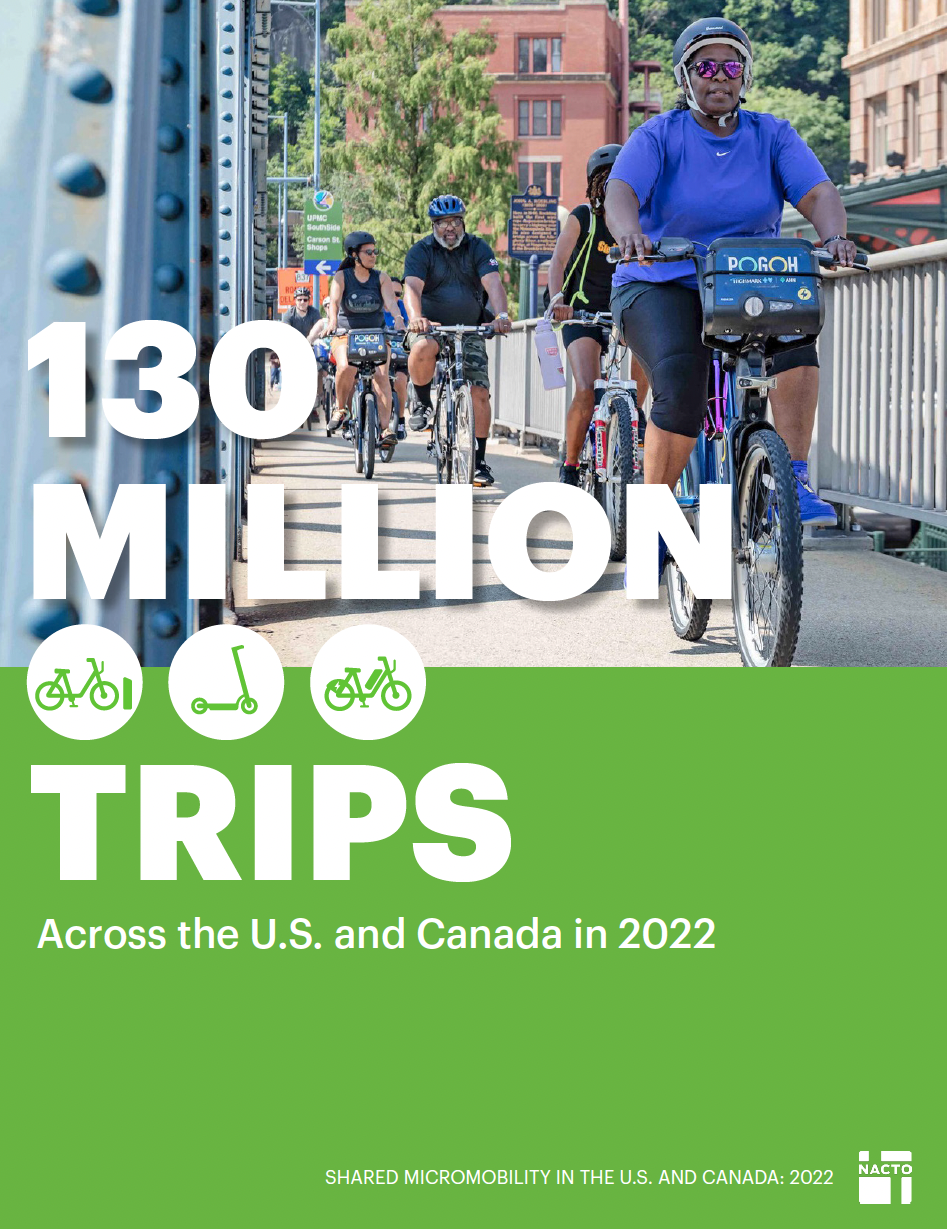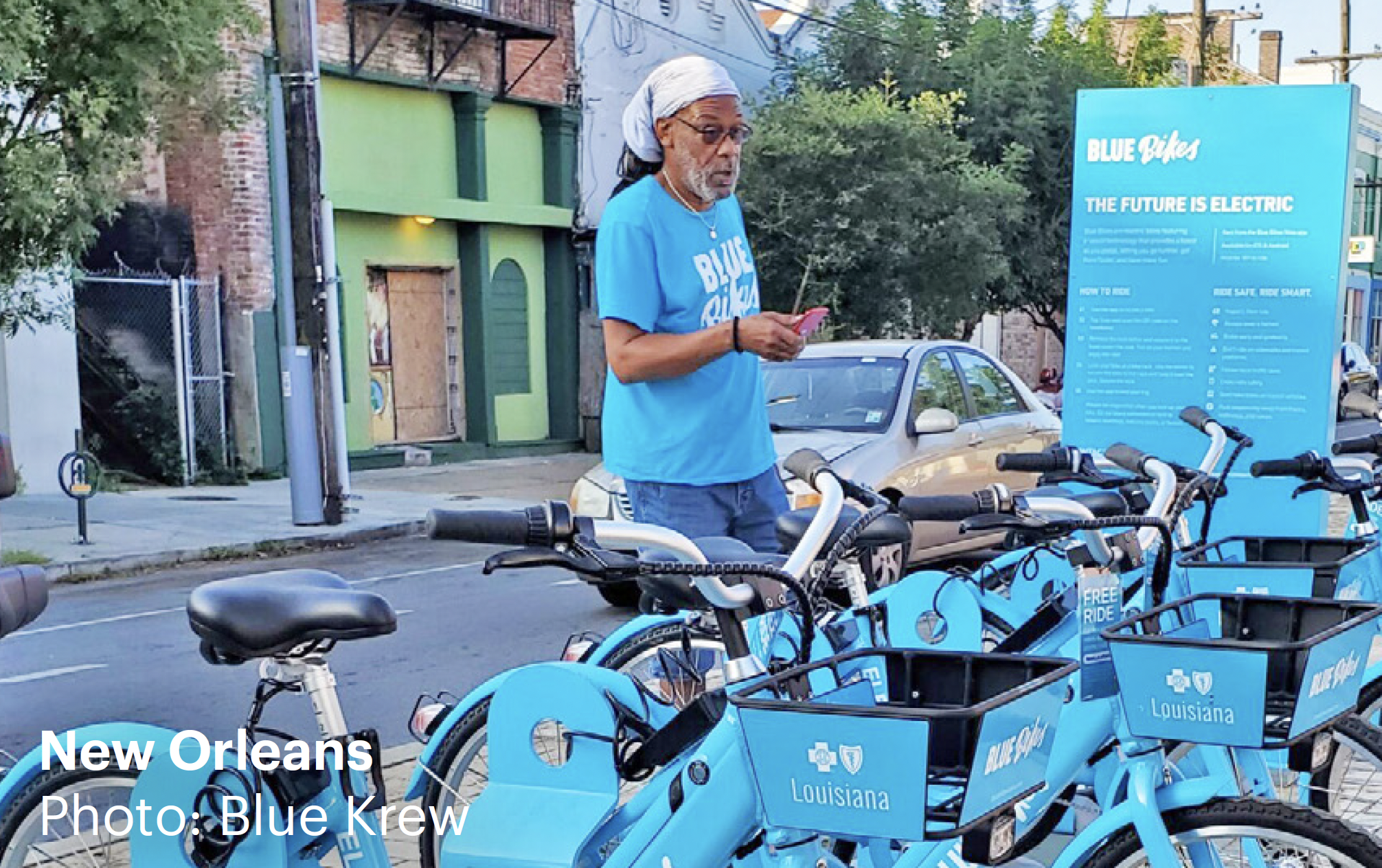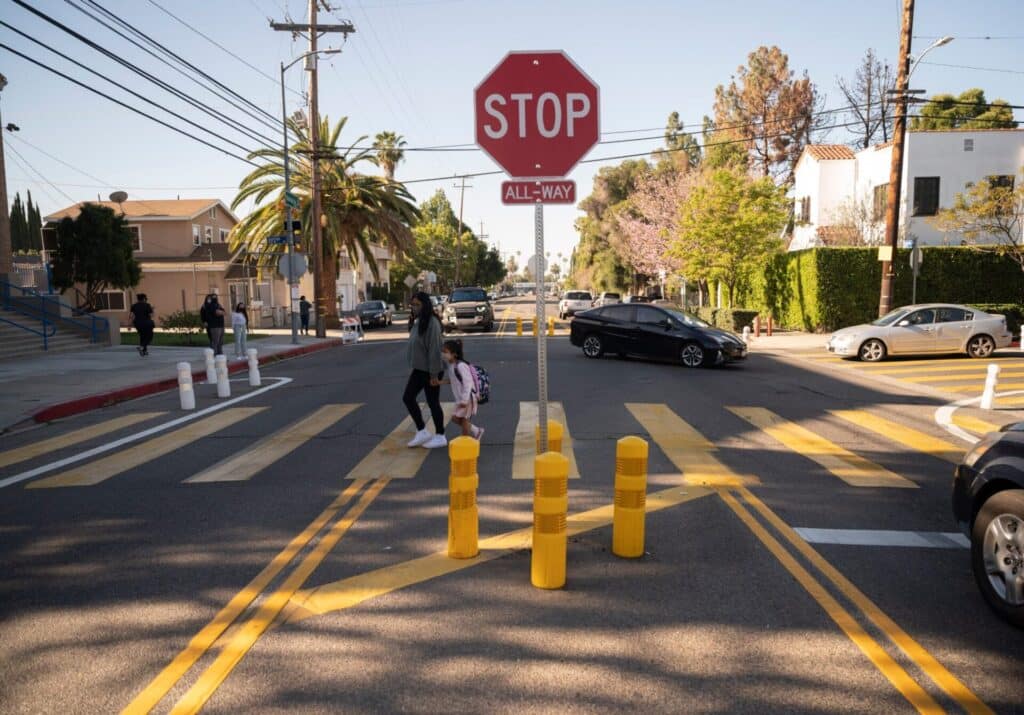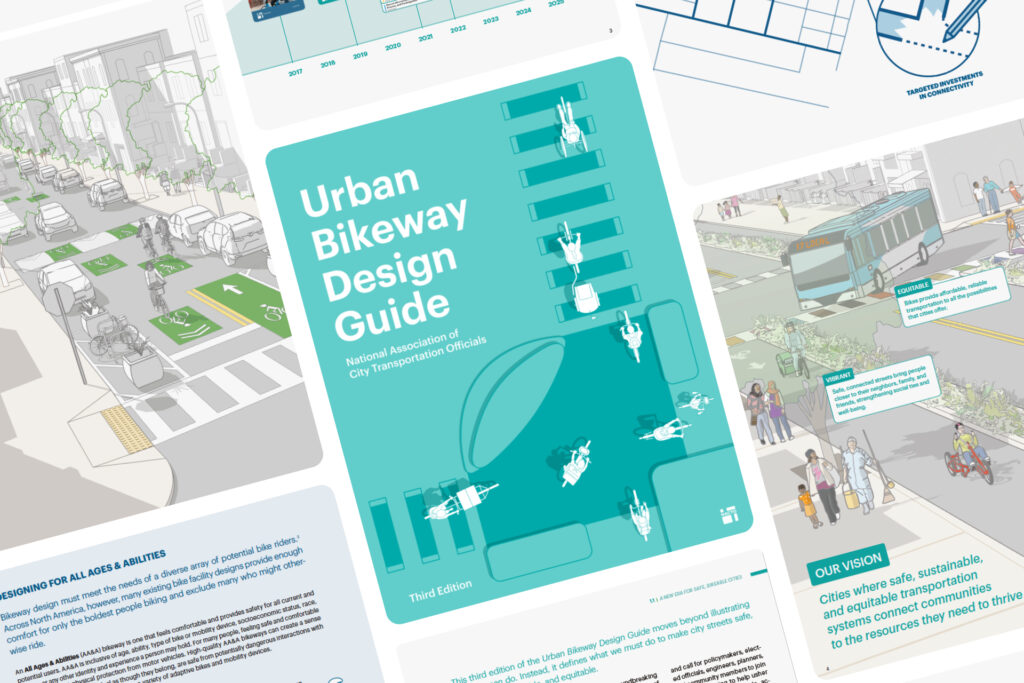New data analysis finds more people took 130 million bike share and e-scooter trips in 2022. The report also finds many shared micromobility systems are at an inflection point; new approaches to pricing and operating structure can ensure systems remain viable and equitable.

Bike share, e-scooters, and other micromobility systems have become ever-more integral to city transportation networks across North America, with at least 130 million trips on micromobility systems in the U.S. and Canada in 2022, according to a new analysis by the National Association of City Transportation Officials (NACTO).
NACTO’s new 2022 Shared Micromobility Report examines data from cities across the U.S. and Canada and finds bike and scooter share is an increasingly vital part of the transportation mix in North America, with record-breaking ridership in many cities. The number of micromobility trips in the U.S. and Canada increased by five million from 2021 and are up by 40% since 2018. In the U.S., shared micromobility continued its pandemic-era recovery, with 113 million trips in 2022, while ridership in Canada blew past pre-pandemic highs, with 17 million trips.
The report also highlights notable trends in the usage of shared micromobility. Even as 9-to-5 commute patterns return, people are using shared micromobility for far more than just work trips: an analysis of large systems finds 34% of riders use shared micromobility to access jobs, while 39% use shared micromobility to run errands, 16% to get to school, and 50% for other social or recreation trips. The e-bike boom has also continued to grow: three-quarters of all station-based systems across the U.S. and Canada expanded the number of e-bikes in their fleets, and in the U.S. alone, total station-based e-bike trips increased from 14.5 million trips in 2021 to 20 million trips in 2022. Station-based e-bikes made up only 9% of available shared micromobility devices in the U.S. and Canada in 2022, yet accounted for 18% of total trips.
NACTO’s analysis also finds some potentially concerning trends, including volatility amongst private-sector operators and climbing costs for riders. Annual membership hikes and rising e-bike surcharges, for example, led to a 70% increase in average per-trip costs for members of station-based bike share systems from the previous year.
The report includes several insights and observations on how to ensure long-term viability and equity for shared micromobility systems, including setting clear goals for pricing; establishing ownership models that offer close municipal control or partnership; and rethinking street design to accommodate more people traveling at different speeds. Shared micromobility can be a competitive and reliable transportation option, the report concludes, but only with holistic planning, clear policy and goal-setting, and close collaboration between cities and operators.
“Shared bikes and e-scooters are a key part of daily life for communities across North America,” said Corinne Kisner, Executive Director of NACTO. “We cannot take this success for granted. To ensure shared micromobility systems continue to grow sustainably and equitably, local leaders must advance safe street design and thoughtful pricing policies in close partnership with operators.”
“This report shows that people are using shared micromobility to not only recreate but to access essential services,” says Tangier Barnes Wright, senior partnerships and program manager for the Better Bike Share Partnership. “When done right, shared micromobility serves the same role as public transportation and cities should be treating it as such. NACTO’s insights on how we can make shared micromobility more equitable and enduring should be the focus of cities everywhere.”
“Philadelphia has seen record high ridership this year, breaking system records for highest number of trips each month of the year to date,” said Waffiyyah Murray, Indego Program Manager at the City of Philadelphia’s Office of Transportation, Infrastructure, and Sustainability. “Similar to Philadelphia, bike and scooter systems across North America are consistently outperforming themselves year after year. This proves that when shared micromobility is implemented with a clear focus on equity, it can be a powerful tool for breaking long standing transportation barriers and provide access for all, especially our most vulnerable users.”
“Bike share through Blue Bikes has improved the lives of thousands of New Orleanians by offering a viable transportation alternative for getting around town,” said Greg Nichols, Deputy Chief Resilience Officer, City of New Orleans. “We are proud to join NACTO member cities in offering equitable pricing, such that one quarter of all rides are taken by low-income residents. This report demonstrates that shared micromobility has become an integral part of transportation networks here and across North America.”
“Torontonians are embracing shared micromobility year-round,” said Barbara Gray, General Manager of Transportation Services at City of Toronto. “We’re seeing an exciting year-over-year trend of increased ridership of 217% in January, a winter month, for our bike share program, and there are more than five million trips projected in total for 2023. Bike Share Toronto has more than 9,000 bikes across 700 stations in the city, and we’re working hard to improve the network for our residents. We’re expanding our bike fleet at transit stations to support first and last-mile connections to public transit and increasing our e-bike fleet to 2,000 by 2025. NACTO’s report highlights a vital insight – that shared micromobility must be made resistant to the volatility of market conditions. We have high hopes for the continued resilience and growth of Bike Share Toronto and the essential role it plays in our public transportation system.”
“The use of micromobility, including scooters, has soared in Denver, helping our city meet its goals of providing residents with multimodal travel options and reducing and replacing single-occupancy vehicle trips with more environmentally-friendly and affordable choices,” said Adam Phipps, Executive Director of Denver’s Department of Transportation and Infrastructure. “We’re also redesigning our streets to support the popularity of micromobility to help ensure that, in the long-term, it remains a viable and safe way to get from place to place in our city. ”
###
About the National Association of City Transportation Officials (NACTO)
NACTO is an association of 100 major North American cities and transit agencies formed to exchange transportation ideas, insights, and practices and cooperatively approach national transportation issues. The organization’s mission is to build cities as places for people, with safe, sustainable, accessible, and equitable transportation choices that support a strong economy and vibrant quality of life. To learn more, visit NACTO.org or follow us on Twitter at @NACTO and Instagram at @NACTOcities.
Press Contact
Alex Engel | [email protected]
Billy Richling | [email protected]
For Immediate Release



